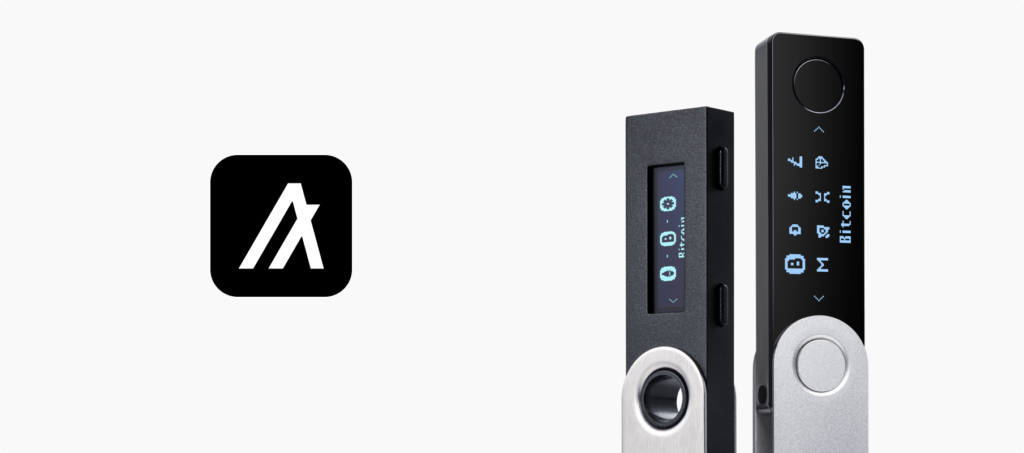Ledger is the largest creator of crypto hardware wallets globally and supports Algorand, making them the only hardware wallet company to do so. Their wallets prioritize security and ownership for individuals and offer a competitive solution for self-custody hot wallets like Coinbase Wallet, Metamask, or Pera/Defly on Algorand.
Whether you need a Ledger wallet depends on your crypto priorities. While they provide the highest level of security and ownership, they do trade off speed and accessibility. In this article, we’ll discuss the pros and cons of keeping your valued crypto assets on a Ledger.
Table of Contents
Ledger Wallet on Algorand Pros
Ledger Wallet on Algorand Cons
Types of Ledger Wallets
Benefits of a Ledger Wallet on Algorand

Private Key and Seed Phrase Storage
Hardware wallets are the most secure way to store your crypto and $ALGO. The most important thing they do is keep your private key and seed phrase completely offline, meaning that there is no way for a scammer to get access to those. In this sense, Ledger and hardware wallets are known as cold wallets, since they never put your private key on the internet.
2-Factor Authentication with Ledger
Ledger Wallets are physical devices, meaning that they are tangible pieces of technology which you buy and store. They also serve as 2-factor authentication, since you must physically confirm transactions using your ledger. This adds an extra layer of protection against remote tampering.
Ledger Wallets are commonly used to store larger amounts of crypto, because they provide maximal security and ownership. As long as you keep your seed phrase safe, you can be certain that no one can access your funds. Some common ways that ledger users like to protect their seed phrase is by keeping it in a vault or bank security deposit box— others use security devices such as cryptosteel.
Ledger, Web3, and the Algorand Ecosystem
Using a Ledger does not limit your access to Web3 either. You can connect a Ledger to both Defly and Pera Wallet and securely interact with the Algorand Ecosystem while taking advantage of the wallet management features offered by both those hot wallets. It’s a win-win, with the only trade off being that transactions are a bit slower to sign since you do have to physically confirm them.
Staking Algorand on Ledger with Governance
Using a Ledger for Governance on Algorand is a natural synergy and an easy way to securely stake your $ALGO. You can follow step by step instructions here. Using a ledger device to commit $ALGO that you already did not plan to touch is an easy way to ensure that you never dip under the commitment minimum. Through the use of hot wallets like Pera or Defly, you can even participate in the more advanced and lucrative Algorand DeFi governance.
Cross-Chain Versatility
Ledger also functions as a safe storage point for multiple blockchains, not just Algorand. Ledger supports almost all major chains, and can store over 5,500 different cryptocurrencies. It is one of the most secure ways to be well prepared for a multi-chain future.
Disadvantages of Ledger Wallets on Algorand

Hardware wallets are not for everyone, and they are certainly not a necessity for every user— especially if using a wallet with low or medium sized funds.
Security and Convenience of Hot Wallets
Just because Ledger wallets provide maximal security, it does not meet that other options have poor security. While I would certainly agree that you should keep your crypto off exchanges (see FTX), hot wallets like Pera and Defly are very secure and do not put your seed phrases/private keys at risk.
Hot wallets are also more convenient, and allow you to access more features and sign transactions faster. If you plan to use gaming wallets or otherwise need to frequently transact, then it is unlikely a ledger would best serve your needs.
Hot Wallets are Better for Beginners
Hardware wallets are also not my recommendation for your first wallet. If you are just starting to move funds off an exchange, I would start with a hot wallet and get used to interacting with Web3/DeFi first. Buying a ledger is a bit of an investment, and it isn’t one you need to make unless you are holding a significant amount of value. It is also something that you can transfer to at any time, so there is no rush to start using one until you feel you need to.
Types of Ledger Wallets: The Stax, Nano X, and Nano S Plus
When it comes to selecting and buying a Ledger wallet, you have a couple of options at different price ranges. All three ledger wallets can be used with Algorand and have Ledger live, so that is not something to worry about. The decision about which wallet is best for you comes down to a couple factors, and so we will do a side-by-side comparison of the three products
Ledger Nano S Plus: Beginner Wallet for Desktop Users

The Ledger Nano S Plus is the cheapest of Ledger wallets and has most core features. It needs to be directly connected to your computer and cannot connect to mobile devices. At a price point of $79, it is the most affordable option and best if you are looking for a place to park and forget about your $ALGO.
Nano S+ Pros
- Cheapest, costs $79
- Has all the important security functions
- Has access to Ledger Live
- Compatible with most cross-chain coins
- Has no battery
Nano S+ Cons
- Does not have mobile bluetooth support, cannot use with Pera Wallet.
- USB-C port can be finicky and a bit of a pain to use.
- Must be plugged in to use
Ledger Nano X: Best for Mobile and Desktop Use

The Ledger Nano X is my personal choice of Ledger and the intermediate price point. At $149, it provides all the benefits of the Nano S plus mobile support and integration with Pera. If you want to buy a ledger wallet to use with Algorand and not worry about advanced features or missing accessibility, the Ledger Nano X is optimal.
Nano X Pros
- All the benefits of the Nano S Plus
- Mobile Integration with Pera Wallet
Nano X Cons
- Twice the cost of the Nano S Plus
- Battery life of 8 hours
Ledger Stax Review: Crypto meets… Apple?

I was pretty surprised when I heard the announcement of the new Ledger Stax, which is a touchscreen iPod-esque product with advanced functionality. It is pretty cool, but at $280 it sits at nearly double the price of the Ledger Nano X. It can currently only be pre-ordered for Summer 2023, but if you are the type of person that loves exploring new product features and enjoy touch screens, you may want to consider looking into the Ledger Stax. I have pre-ordered the Stax and am excited to try it out, but skeptical that it is really necessary.
Stax Pros
- Curved E Ink Touchscreen
- Most benefits of previous Ledgers
- Wireless charging, screen customization
Stax Cons
- at $280, it is 2x the cost of the Nano X, 4x of the Nano S Plus
- Features are not necessary for most purposes
- 4 months+ until launch
Thanks for Reading! Want to learn more about Algorand?
Follow me (@algonautblog) on twitter!
Keeping up with this blog and reading other articles is a great way to learn about the ecosystem. Here are the most popular articles I’ve written.
